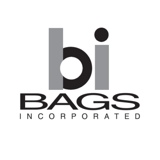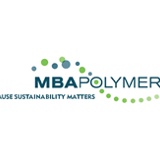Information
-
Document No.
-
Audit Title
-
Client / Site
-
Conducted on
-
Prepared by
-
Location
Previous inspection
-
Has the last inspection been reviewed?
-
Are there any outstanding actions?
Subpart D - Walking-Working Surfaces
-
Are aisles and passageways clear and marked as appropriate?
-
Are all guard rails and toe boards in good condition?
-
Is all railing in a condition so that it can withstand 200 pounds of top rail pressure?
-
Are stairs and risers kept clear?
-
Are all ladders in good condition, joints between steps and side rails tight, all hardware and fittings securely attached, and moveable parts operating freely without binding or undue play?
-
Are all ladders labeled correctly and are labels legible?
-
Are all fixed ladders free of damage?
-
Are dockboards secured in position and in proper working order?
Subpart E - Means of Egress
-
Exit routes clear of obstructions? (Exit access at least 28 inches wide at all points?)
-
Exit doors easily opened from inside?
-
Emergency lighting functioning properly?
-
Fire alarm system functioning correctly?
-
Evacuation plan displayed and understood by all employees?
Subpart G - Occupational Health and Environmental Control
Hearing Conservation
-
Are employees who are included in the program wearing approved hearing protection?
-
Are at least two forms of hearing protection available to employees?
Subpart H - Hazardous Materials
Compressed Gas Cylinders
-
Are compressed gas cylinders stored in areas protected from external heat sources?
-
Are compressed gas cylinders legibly marked to clearly identify the type of gas?
-
Are compressed gas cylinders stored in areas where they will not be damaged by passing or falling objects or subject to tampering by unauthorized persons?
-
Are compressed gas cylinders stored or transported in a manner to prevent them from creating a hazard by tipping, falling, or rolling?
Flammable Liquids
-
Are only approved containers being used to store and handle flammable liquids?
-
Are all flammable liquid containers not in use closed?
-
Is 3 feet aisle maintained throughout the ink room?
-
Is purged and pressurized system functioning properly and at safe pressure for electrical cabinet in the ink room?
-
Is exhaust fan in ink room functioning properly?
-
Are exits free of flammable liquid storage?
-
Are all flammable liquid containers free of leakage and damage?
-
Is storage of flammable liquids outside of ink room under 120 gallons in any one area?
-
Are bulk drums of flammable liquids used for dispensing effectively grounded?
Subpart I - Personal Protective Equipment
Eye and face protection
-
Is eye and face protection for liquid chemicals and injurious light radiation readily available to employees?
Hand Protection
-
Is appropriate hand protection for handling of harmful substances readily available to employees?
Subpart J - General Environmental Controls
The control of hazardous energy (lockout/tagout)
-
Are all necessary lockout/tagout devices and hardware in their proper place and readily available for authorized employees to use?
-
Are machine specific written procedures being documented by employees when lockout/tagout is used?
Subpart K - Medical and First Aid
-
Are first aid kits supplied with all necessary materials? (See first aid kit checklist)
-
Are bloodborne pathogens kits supplied with all necessary materials?
-
Are all eyewash stations supplied with unexpired eyewash bottles?
Subpart L - Fire Protection
-
Are fire extinguishers free of obstructions?
-
Are inspection tags in place on fire extinguishers to denote periodic inspection?
-
Is proper clearance maintained below sprinkler heads?
-
Are all oily or paint-soaked rags and waste kept in covered metal waste cans designated for such use?
Subpart N - Materials Handling and Storage
Handling Materials - General
-
Are materials stored so as not to create a hazard?
-
Are materials stored in tiers stacked, blocked, interlocked and limited in height so that they are stable and secure against sliding or collapse?
-
Are storage areas free of accumulation of materials that constitute hazards from tripping, fire, explosion, or pest harborage?
-
Are racks free of excessive damage which could cause collapse?
Powered Industrial Trucks
-
Are operators from each shift completing the daily safety checklist?
-
Are only trained and certified employees operating forklifts without supervision?
-
Are trucks in need of repair removed from service?
-
Are all roll jacks in proper working condition and those that aren't removed from service?
Slings
-
Are slings free of damage and defects?
-
Are identification markings affixed and legible?
Subpart O - Machinery and Machine Guarding
-
Are all machine guards securely affixed to machines where necessary?
-
Are machine guards in good condition?
-
Are guards electrically interlocked to machines working properly?
-
Are all machines designed for a fixed location securely anchored to prevent walking or moving?
-
Is abrasive wheel machinery equipped with appropriate guards?
-
Is grinder's work rest and tongue at appropriate distances from wheels?
-
Are wheels used on grinder free of cracks, damage, or defects?
-
Have all weekly machine guarding inspections been completed for the month?
Subpart P - Hand and Portable Powered Tools and Other Hand-Held Equipment
-
Are all portable circular saws equipped with guards above and below the base shoe?
-
Are appropriate safety guards being used on portable grinders?
-
Are wheels on portable grinder free of cracks, damage, or defects?
-
Are all hand tools, both powered and non-powered, in good working condition?
Subpart Q - Welding, Cutting, and Brazing
-
Is all necessary PPE for welding readily available and in good condition?
-
Is exhaust fan for ventilation of welding area in proper working order?
Subpart S - Electrical
-
Are all unused openings (including conduit knockouts) in electrical enclosures and fittings closed with appropriate covers, plugs, or plates?
-
Is all electrical equipment free of damaged parts that may adversely affect safe operation or mechanical strength of equipment? (Parts that are broken, bent, cut, or deteriorated by corrosion, chemical action, or overheating)
-
Are all electrical raceways and enclosures securely fastened to surface on which it is mounted?
-
Are all necessary markings including manufacturer's name, voltage, current, wattage or other ratings marked on equipment and are markings legible?
-
Are all identification labels legible?
-
Is sufficient access and working space provided and maintained around all electrical equipment to permit ready and safe operations and maintenance?
-
Are all energized parts of electrical circuits and equipment guarded against accidental contact by approved cabinets or enclosures?
-
Are there no broken receptacles, sockets or switches?
-
Is there no potential overloading of circuits?
-
Is all conduit effectively bonded to ensure electrical continuity?
-
Portable equipment tested and tagged?
-
No missing grounding prong on extension cords and cord and plug connected equipment?
-
Extension cords used for temporary purposes only?
-
Flexible cords and cables free of and not subject to damage, strains, splices, and taps?
-
No power leads across walkways?
-
Are all conductors entering cutout boxes, cabinets, or fittings protected from abrasion, and are openings through which conductors enter effectively closed?
-
No exposed current-carrying parts?
-
Is PPE for working on electrical equipment readily available to qualified personnel?
Subpart Z - Toxic and Hazardous Substances
Hazard Communication
-
All containers labelled correctly?
-
Safety Data Sheets available for all chemicals?
Sign Off
-
Safety Coordinator's signature













